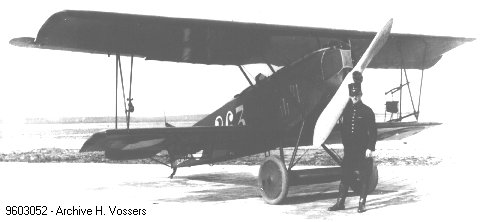The second International Polar Year
During the second polar year, which was held from September 1932 to September 1933, the Dutch set up an ‘aerological’ station at Reykjavik, Iceland. From this station, two Dutch Fokker D.VII’s made flights every day, to record atmospheric pressure, temperature and humidity with a device which was mounted beneath the wing. Therefore, the pilot had to climb to an altitude of 5.000 to 6.000 meter. The Dutch were chosen for this task, because they had made more than 6.000 meteorological flights between 1919 and 1932, without any personal accident.
Things were not going to be easy for the pilots Van Giessen and Bosch and their mechanic Van Der Leden. In the first place, they had trouble finding a suitable landing place in the neighborhood of Reykjavik. At last they found two parallel fields, which were seperated by a ditch. It was not possible to fill it in, so they made a bridge over it, approximately 40 meters long. In that way they created a field 440 meters long and 100 meters wide. Since the D.VII did not have brakes, one can imagine that every landing was quite an experience. Still, there never was an accident.
The flying itself was also quite difficult. The D.VII with its open cockpit did not have any kind of heating. Once, a temperature of -63 degrees Celcius was measured at a height of 6.000 meters. And they had the problem of ice on the wings, and no de-icers. A typical flight to the desired height, would take 40 minutes. After that, they had to descend through the clouds, which was very dangerous. In the neighborhood of Reykjavik, the mountains are 1.000 meters high. So, mostly they would turn to the west, to come out of the clouds above the sea, and fly backt to the base. Since the endurance of the D.VII was only 1 hour and 15 minutes, this was also a hazardous operation.
In total, there were 470 flight made. From these, 330 flights had an average height of 5605 meters, and the maximum height reached was 6704 meters. This was a record for Iceland. Total flying time was 560 hour. When Lindbergh visited Iceland on his flight to Kopenhagen (Denmark), he asked if he could fly the D.VII. Of course this was granted, and he stepped into the cockpit to receive instructions. Then there was a conversation like this:
Linbergh: “Where is your blind-flying equipment ?” Answer: “We don’t have any.” Lindbergh: “So how do you go through the clouds ?” Answer: “Well, on our feeling.” Lindbergh: “Where is your radio ?” Answer: “We don’t have a radio.” Lindbergh: “I hope you don’t mind, but I am not not going to make this flight.”
In the Dutch publication “Geen laag te hoog” (ISBN 978-90-8616-127-0) by Jacques A.C. Bartels you can read the whole story of the Dutch contribution. More info on this book at the publishers website.




